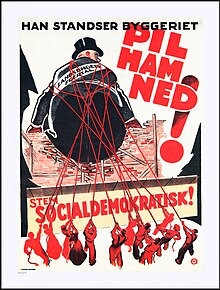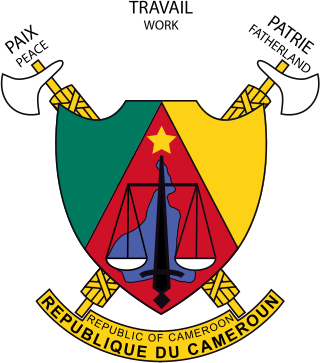
The politics of Cameroon takes place in the context of an electoral autocracy where multi-party elections have been held since 1992, the ruling party wins every election, and Paul Biya has been president since 1982. Since Cameroon's independence in 1960, it has been a single-party state and ruled only by two presidents: Ahmadou Ahidjo and Paul Biya. Political opposition are repressed and elections are manipulated in favor of the ruling party.
The Civic Platform is a centre to centre-right liberal conservative political party in Poland. Since 2021, it has been led by Donald Tusk, who previously led it from 2003 to 2014 and was President of the European Council from 2014 to 2019.
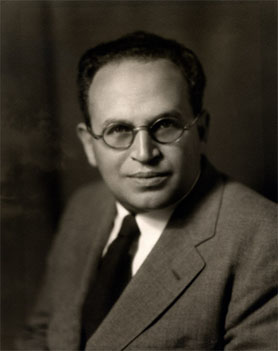
Paul Felix Lazarsfeld was an Austrian-American sociologist and mathematician. The founder of Columbia University's Bureau of Applied Social Research, he exerted influence over the techniques and the organization of social research. "It is not so much that he was an American sociologist," one colleague said of him after his death, "as it was that he determined what American sociology would be." Lazarsfeld said that his goal was "to produce Paul Lazarsfelds". He was a founding figure in 20th-century empirical sociology.
Political polarization is the divergence of political attitudes away from the center, towards ideological extremes. Scholars distinguish between ideological polarization and affective polarization.
A party system is a concept in comparative political science concerning the system of government by political parties in a democratic country. The idea is that political parties have basic similarities: they control the government, have a stable base of mass popular support, and create internal mechanisms for controlling funding, information and nominations.
Direct election is a system of choosing political officeholders in which the voters directly cast ballots for the persons or political party that they desire to see elected. The method by which the winner or winners of a direct election are chosen depends upon the electoral system used. The most commonly used systems are the plurality system and the two-round system for single-winner elections, such as a presidential election, and proportional representation for the election of a legislature or executive.
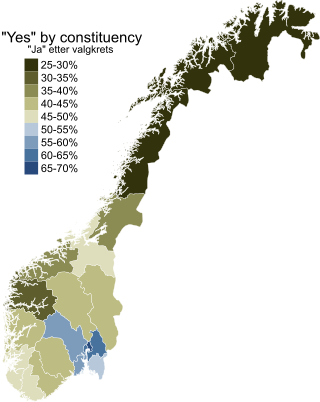
A referendum on joining the European Union was held in Norway on 27 and 28 November 1994. After a long period of heated debate, the "no" side won with 52.2 per cent of the vote, on a turnout of 88.6 per cent. Membership of what was then the European Community had previously been rejected in a 1972 referendum, and by French veto in 1962.

Elections in Cameroon occur in a system of electoral autocracy, as the ruling party manipulates elections and represses political opposition.

Seymour Martin Lipset was an American sociologist and political scientist. His major work was in the fields of political sociology, trade union organization, social stratification, public opinion, and the sociology of intellectual life. He also wrote extensively about the conditions for democracy in comparative perspective. He was president of both the American Political Science Association (1979–1980) and the American Sociological Association (1992–1993). A socialist in his early life, Lipset later moved to the right, and was considered to be one of the first neoconservatives.
Party identification refers to the political party with which an individual identifies. Party identification is affiliation with a political party. Party identification is typically determined by the political party that an individual most commonly supports.

The Sixth Party System is the era in United States politics following the Fifth Party System. As with any periodization, opinions differ on when the Sixth Party System may have begun, with suggested dates ranging from the late 1960s to the Republican Revolution of 1994. Nonetheless, there is agreement among scholars that the Sixth Party System features strong division between the Democratic and Republican parties, which are rooted in socioeconomic class, cultural, religious, educational and racial issues, and debates over the proper role of government.
Ethnic hatred, inter-ethnic hatred, racial hatred, or ethnic tension refers to notions and acts of prejudice and hostility towards an ethnic group to varying degrees.
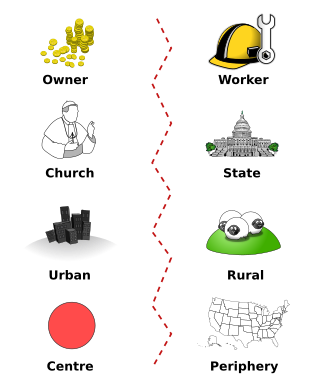
In political science and sociology, a cleavage is a historically determined social or cultural line which divides citizens within a society into groups with differing political interests, resulting in political conflict among these groups. Social or cultural cleavages thus become political cleavages once they get politicized as such. Cleavage theory accordingly argues that political cleavages predominantly determine a country's party system as well as the individual voting behavior of citizens, dividing them into voting blocs. These blocs are distinguished by similar socio-economic characteristics, who vote and view the world in a similar way. It is distinct from other common political theories on voting behavior in the sense that it focuses on aggregate and structural patterns instead of individual voting behaviors.
Resource nationalism is the tendency of people and governments to assert control over natural resources located within their territory. As a result, resource nationalism conflicts with the interests of multinational corporations.
Voting behavior refers to how people decide how to vote. This decision is shaped by a complex interplay between an individual voter's attitudes as well as social factors. Voter attitudes include characteristics such as ideological predisposition, party identity, degree of satisfaction with the existing government, public policy leanings, and feelings about a candidate's personality traits. Social factors include race, religion and degree of religiosity, social and economic class, educational level, regional characteristics, and gender. The degree to which a person identifies with a political party influences voting behavior, as does social identity. Voter decision-making is not a purely rational endeavor but rather is profoundly influenced by personal and social biases and deeply held beliefs as well as characteristics such as personality, memory, emotions, and other psychological factors. Voting advice applications and avoidance of wasted votes through strategic voting can impact voting behavior.
Nan Dirk de Graaf is a Dutch sociologist working in Nuffield College, University of Oxford. He is known for his work on social stratification, religion, political sociology, the impact of social mobility on a variety of social issues, pro-social behaviour, as well as his books.
Kathleen Thelen is an American political scientist specializing in comparative politics. She is the Ford Professor of Political Science at the Massachusetts Institute of Technology (MIT), a permanent external member of the Max Planck Institute for the Study of Societies (MPIfG), and a faculty associate at the Center for European Studies (CES) at Harvard University.
Computational politics is the intersection between computer science and political science. The area involves the usage of computational methods, such as analysis tools and prediction methods, to present the solutions to political sciences questions. Researchers in this area use large sets of data to study user behavior. Common examples of such works are building a classifier to predict users' political bias in social media or finding political bias in the news. This discipline is closely related with digital sociology. However, the main focus of computational politics is on political related problems and analysis.
Political cognition refers to the study of how individuals come to understand the political world, and how this understanding leads to political behavior. Some of the processes studied under the umbrella of political cognition include attention, interpretation, judgment, and memory. Most of the advancements in the area have been made by scholars in the fields of social psychology, political science, and communication studies.

Most measures of religiosity, such as church attendance and affiliation, are positively correlated with the authoritarian personality cluster, which includes submission to authority, conventionality, and intolerance of out-groups. The correlation is especially strong between religious fundamentalism and authoritarianism, both of which are characterized by low openness to experience, high rigidity, and low cognitive complexity. In particular, authoritarianism "is positively associated with a religion that is conventional, unquestioned, and unreflective".
